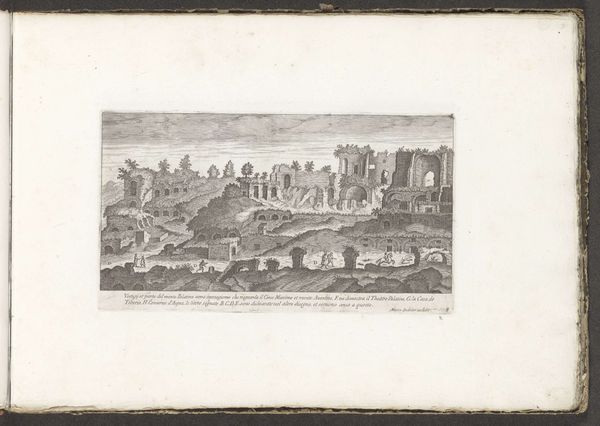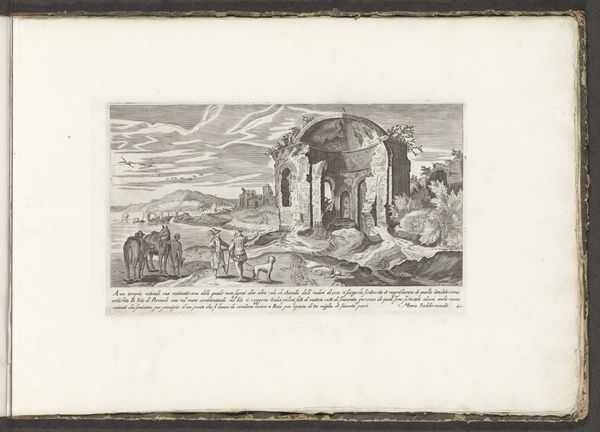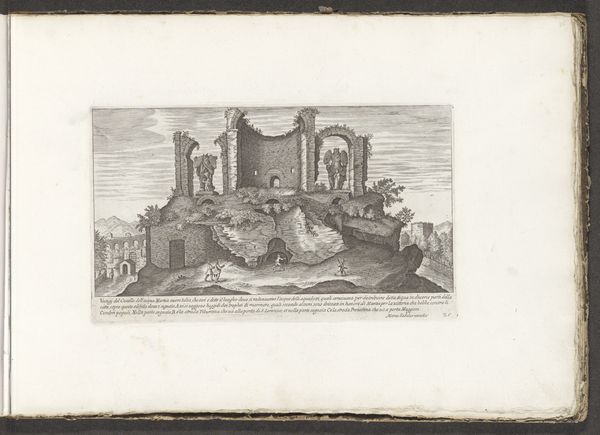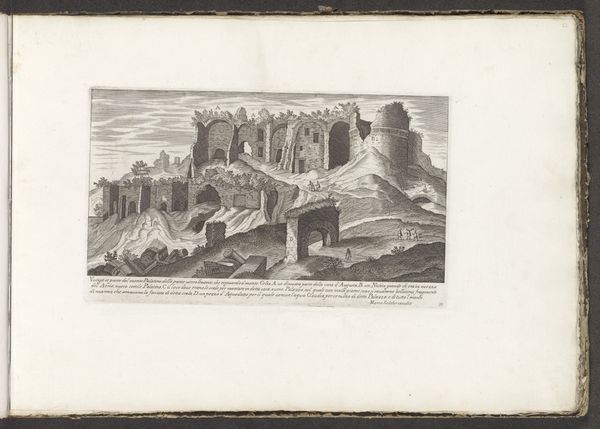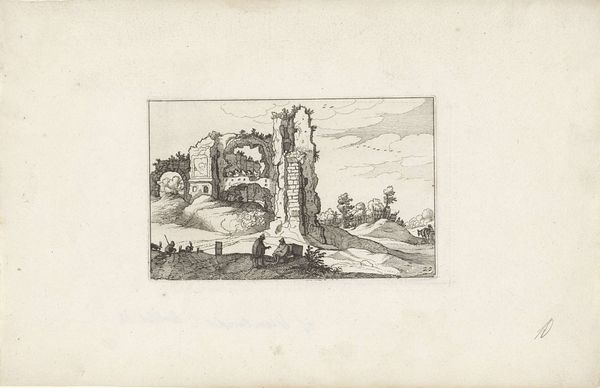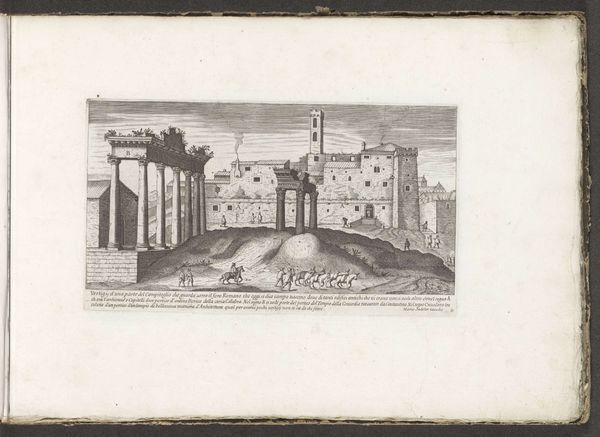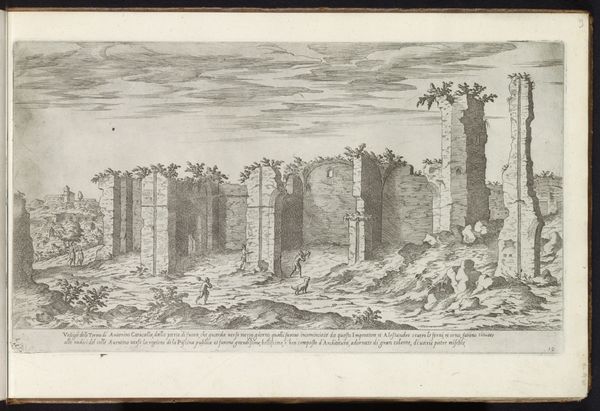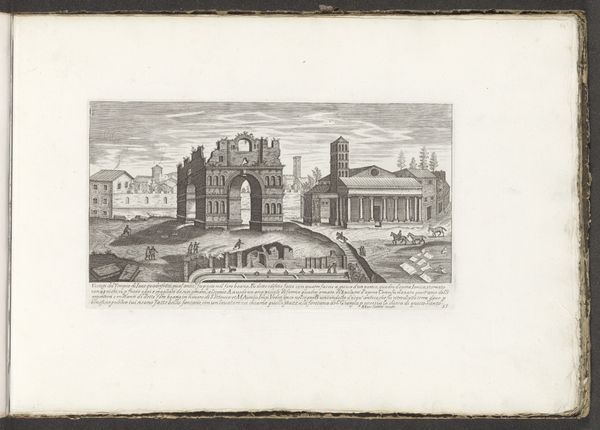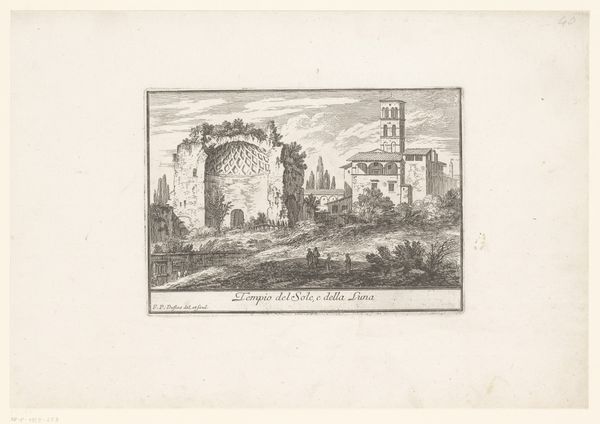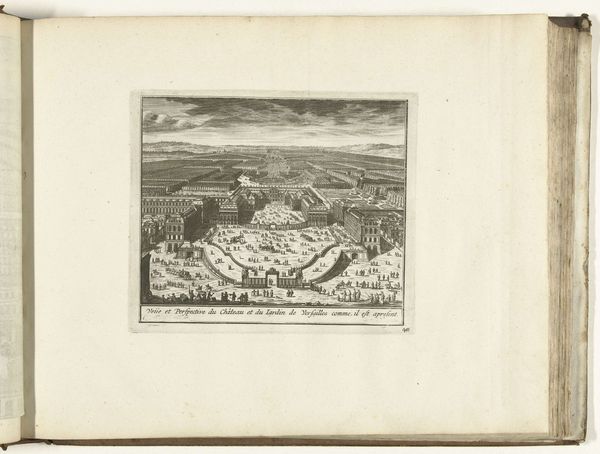
print, engraving, architecture
#
baroque
# print
#
landscape
#
history-painting
#
engraving
#
architecture
Dimensions: height 158 mm, width 268 mm
Copyright: Rijks Museum: Open Domain
Curator: Oh, wow, the mood of this piece really hits me. There’s a sense of something monumental slowly dissolving back into nature, like a half-remembered dream. Editor: We are looking at a 1680 print entitled "Tempel van Jupiter Stator met de Tempel van Jupiter Stator". This piece is an engraving and etching showcasing Roman ruins, crafted by an anonymous artist. It encapsulates the Baroque fascination with antiquity. Curator: Anonymous... that’s interesting in itself. I feel a poignant sense of loss, seeing those magnificent columns so worn, but they're so human, as though whispering of triumphs and tragedies. Did this temple hold any specific cultural significance at the time? Editor: The Temple of Jupiter Stator was traditionally linked to moments of Roman resilience. Romulus vowed to build it after his troops began to falter in battle. Rebuilding this specific visual record through a print highlights not just the grandeur of Rome, but also the politics surrounding its ruin. Curator: Ah, so it's a story of grit and turning points visualized in stone – though, ironically, now etched into copper, then pressed onto paper. Editor: Exactly. Consider, too, the subtle interplay between civilization and decay in Baroque art. It’s not simply about decline; it’s a meditation on time, power, and the cyclical nature of history. Landscape and architecture intermingle. Who holds authority? Nature, with its ever-patient advance, or the faded echoes of empires? Curator: That makes me wonder what other layers we might find if we could somehow meet the artist, understand their feelings as they observed those very ruins... perhaps feelings we echo, even now. Editor: The 'anonymous' artist may be less a mystery and more an illustration of the engraver's role at that time. Their labour wasn't always celebrated as individual artistry. Rather it became subsumed to a collective project of preserving, interpreting, and disseminating knowledge of Roman antiquity. A very powerful observation nonetheless. Curator: In that light, "Tempel van Jupiter Stator met de Tempel van Jupiter Stator," becomes a mirror reflecting time and societal values. A somber, humbling visual journey. Editor: Precisely. It reveals both the echoes of power and the silent forces that reshape even the most enduring legacies.
Comments
No comments
Be the first to comment and join the conversation on the ultimate creative platform.
